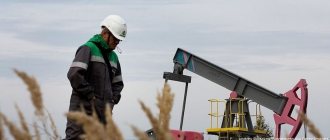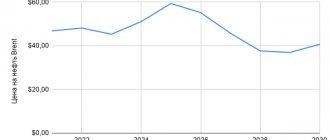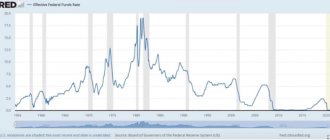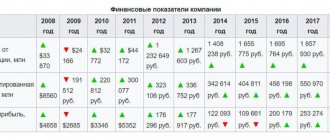Recommendations to stop investing in oil and gas
According to him, the recommendations of the International Energy Agency to stop investing in oil and gas are not calculated and are populist in nature.
“It seems to me that this is a more populist statement, a tribute to fashion, in my opinion, these are not calculated things, they need to be considered very carefully. Even with the energy transition in the next decade, hydrocarbons will occupy a dominant position in the energy balance, will ensure the security of the world and the need for even the same electricity, so all this must be clearly taken into account,” he continued.
“I think that other analytical judgments will probably appear, analytics from other equally respected organizations,” Novak emphasized.
The International Energy Agency previously proposed scrapping new mining projects to combat global warming. It has prepared a corresponding plan to achieve carbon neutrality by 2050.
Forms of trade
There are only two of them - spot and contract. Experts estimate their ratio as 50 to 50 or 55 to 45, giving preference to short-term transactions on spot conditions.
Spot trading involves the transfer of a relatively small amount of oil, such as one tanker. The price is determined on the date of sale.
If long-term cooperation is necessary, a contract form is used, which presupposes a long-term relationship between the buyer and the provider (or intermediary) with mutual obligations. This is not always convenient, since the oil price environment is constantly changing. If the cost increases, the oil producer will clearly lose, since the contract price cannot be changed unilaterally.
Oil trading
Types of contracts
There are two main types: forwards and futures. Both of them involve the delivery of a specified amount of oil at a certain price within a specific time frame. In this case, a futures contract is a type of forward contract. Futures are used in the process of exchange trading, their forms are standardized. In fact, it is contracts (futures) that are sold on the exchange, and not the oil itself.
Forwards are used in over-the-counter trading and are not standardized. Their conditions are determined by counterparties in each specific case.
Stock game
For most participants, playing on the stock exchange is not trading in “black gold”, but an opportunity to make money on changes in its value. Victory will go to the one who more accurately predicts the change in the price per barrel.
Types of players
They are standard for any exchange. These are “bears” and “bulls”. Bears make money from falling oil prices. Bulls, on the contrary, will make a profit if the cost of a barrel increases.
Return of Iranian oil to the market
Countries included in the agreement to reduce OPEC+ oil production are taking into account the possibility of Iranian oil returning to the world market, Novak added.
“Potentially, we mean that there will be such an opportunity. Iran has the potential to recover. We have always advocated that sanctions are discriminatory towards Iran,” he said.
“Iran has potential, we must take this into account, based on real production volumes, everything needs to be calculated. The Iranians are already part of OPEC and OPEC+, and together we will balance the balance,” Novak added.
According to him, the impact of this factor on the market still needs to be studied and calculated. This will be dealt with by the technical committee under OPEC+, which monthly studies the situation and makes recommendations for the ministerial meeting of the countries participating in the agreement. “Therefore, we cannot say in advance,” Novak emphasized.
Between the waves
Perhaps the chaos that reigned in the oil market is best conveyed by the events of late April. American exchange operator CME Group reported that on April 20, the cost of a futures contract for WTI for delivery in May was minus $37.63 per barrel. That is, the situation at the end of March, which was recorded on local markets, was repeated on the global market. This information, of course, became a real sensation, although the situation was largely explained by “technical reasons”: during this period, the deadline for May futures was expiring, which, together with a drop in demand and a lack of space in oil storage facilities, triggered the collapse. However, the current June futures, which reflected market expectations, were trading at only $20–21 at the end of April, and this applied to both WTI and Brent. The Urals quote generally fell below $10.
Even the resumption of the OPEC+ deal with 10 million barrels. production cuts could not reverse market pessimism, because the real drop in demand in April was expected to be 29 million barrels. per day, in May - 26 million barrels, and in June - 15 million barrels. These forecasts objectively reflected the situation: the use of vehicles during the lockdown period decreased by 50–75%, and air travel in some countries by up to 90%. And transport consumes almost 60% of the world's oil.
The next couple of months for the oil market can be compared to the state of a seriously ill patient, whose threat to life seems to be gradually decreasing, but his condition is still very far from recovery. The OPEC+ injection reduced the average daily production of oil and condensate in the first five days of May by 16%. The Chinese economy was the first to emerge from the crisis peak, and in June, oil imports in the Middle Kingdom increased by 34% even compared to June 2019. So, to some extent, the second quarter was a time of recovery. True, not for everyone.
In May, Rystad Energy and Baker Hughes reported a historic low in the number of drilling rigs deployed in the US oil and gas industry. Their number has decreased by 57% since March, and this was the worst figure in 80 years. According to Deloitte estimates, in the first half of the year, about a third of the US shale industry was insolvent.
As often happens, a wave of bankruptcies launched a counter wave of takeovers, which was a rather positive message: oil market sharks, despite the problems, retained their interest in shale production. The largest deal of the year was ConocoPhillips' purchase of Concho for $9.7 billion. This made the American giant the second largest asset in the main US shale basin - the Permian. The globalization of shale production has become just one of the important trends shaped by the coronavirus crisis.
About the situation with Iran
Bloomberg reported that Iran is making preparatory work to quickly increase oil production if an agreement is reached on a nuclear deal and American sanctions are lifted. According to the most optimistic forecasts, Iran will be able to return to production levels of 4 million barrels per day within three months.
Negotiations are currently underway in Vienna on the return of the United States and Iran to the Joint Comprehensive Plan of Action (JCPOA) on the Islamic Republic’s nuclear program. The previous American President Donald Trump decided in 2021 to withdraw from the JCPOA. This agreement was signed with Iran by the five permanent members of the UN Security Council and Germany in 2015 to resolve the crisis over the Islamic Republic's nuclear development.
Current US President Joe Biden has repeatedly signaled his readiness to return the US to the JCPOA. Iranian President Hassan Rouhani warned in a March 2 phone call with his French counterpart Emmanuel Macron that the only way to preserve the JCPOA is for Washington to lift sanctions against Tehran.
THE WORLD'S LARGEST NATURAL GAS PRODUCERS
Global natural gas production has increased from 2 trillion m3 in 1990 to almost 4 trillion m3 in 2021 (Figure 3).
Rice. 3 Natural gas production in the world, trillion m3 Source: [3]
In 2021, the largest increase in natural gas production was observed in the United States (11.5%), which accounted for 45% of the total global production increase. The majority (more than 70%) is shale gas. Natural gas production also increased in Russia – by 6.7%, as well as in Iran, mainly in the South Pars field. Australia's gas production continues to grow (+15%) thanks to LPG projects introduced in 2021 and 2021.
Gas production in Egypt is growing rapidly (by 20% in 2021) due to the expansion of the West Nile Delta field. In Europe, gas production continues to fall (by 15% in 2021) due to production cuts by the Netherlands (Figure 4).
Rice. 4 Leading global natural gas producers in 2021 (billion m3) Source: [3]
USA. Since 2012, the country has become the world leader in natural gas production, overtaking Russia in this indicator. In 2021, the United States produced 832 billion m3 of gas, accounting for 21.5% of global production. Unlike other countries, most of the gas produced is consumed on the domestic market. The country is now actively investing in technologies for gas production from low-permeability formations, which, according to forecasts, will increase production to 30 trillion m3 by 2030, despite environmental concerns related to possible contamination of groundwater and increased seismic activity.
Russia. The country ranks second in the world in natural gas production (670 billion m3), which accounts for 17.5% of global production. The country is the largest exporter of natural gas, which is sent mainly to Western European countries.
Iran. The country ranks third in the world in gas production with a share of 6.2%. With 17% of the world's gas reserves, Iran uses only a small fraction of its natural potential. Thanks to high demand for natural gas, the country is rapidly increasing production, which increased over 2008–2021. accordingly, from 123 to 240 billion m3, including by 8.8% in 2021.
Canada. Gas production in Canada increased by 4% in 2021, amounting to 185 billion m3, or 4.8% of global production. Until 2015, production in the country practically did not grow, stabilizing at the level of 150 billion m3. However, then there was a significant increase in investment in this sector, which employs more than 6 million people.
Qatar. The country ranks fifth in the world in natural gas production, or 4.5% of global production. Qatar is also the world's second largest gas exporter. Producing 176 billion m3 of gas, the country exports more than 120 billion m3. Kuwait is investing heavily in liquefied natural gas capacity and plans to remain a leader in this segment in the future.
China. The country ranks sixth in the world in gas production, or 4.2% of global production. However, China practically does not export gas, since it is consumed on the domestic market.
Australia. Natural gas production is growing in the country at an exceptionally fast pace: in 2021, the increase in production was more than 15%, and in 2008–2018. production increased more than 3 times, reaching 190 billion m3, or 3.4% of global production. With the expansion of existing projects, Australia could become the largest gas exporter in the world.
Norway. The country ranks eighth in the world in gas production (3.1% of world production). Export earnings play a vital role in the country's economy. Along with deposits in the Barents Sea, Norway is developing the Arctic regions, which could lead to explosive growth in production.
Saudi Arabia. The traditional leading producer and exporter of oil, Saudi Arabia, ranks ninth in the world in natural gas production, which in 2021 amounted to 112 billion m3 (2.9% of the world). The country is not a significant exporter, as most of the gas is consumed domestically for power generation and a fast-growing petrochemical complex.
Algeria. The country closes the top ten leading gas producers with a production volume of 92 billion m3 (2.4% of the world). However, in the last decade this production has practically not grown, and in 2021 there was even a decrease of 0.7% compared to the previous year. At the same time, the country remains an important exporter of natural gas to different countries of the world.
Numbers
In total, only about 7% of futures contracts traded on an exchange make it to actual delivery.
Let's remember the drawing. 200 billion 14 billion survive to execution .
What about the others?
The remaining contracts are “closed.” What does it mean to “close” a contract? Conclude “opposite”. See picture below.











